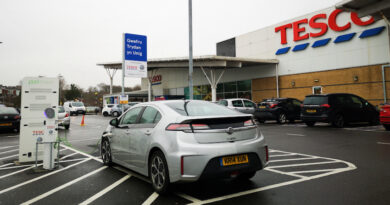Stellantis pumps €30 billion into brand new electrification roadmap
Stellantis is pledging more than €30 billion in electrification as the Group aims to become the market leader for low emission vehicles.
Laying out the plans in the Group’s ‘EV Day 2021’, Stellantis is targeting to achieve sustainable, double-digit Adjusted Operating Income margins by investing more than €30 billion through 2025 in electrification and software development.
The money will go towards equity investments made in joint ventures to fund their activities, while targeting to continue to be 30 percent more efficient than the industry with respect to total Capex and R&D spend versus revenues.
As a result, Stellantis intends to become the market leader in low emission vehicles, and through to 2030, the Group’s LEV mix for passenger cars in Europe is targeted to steadily grow to over 70% – 10 percentage points ahead of current industry assumptions for overall market mix. In the U.S., Stellantis’ LEV mix for passenger cars and light-duty trucks is expected to be more than 40% by 2030.
Carlos Tavares, chief executive officer of Stellantis, said: “The customer is always at the heart of Stellantis and our commitment with this €30 billion-plus investment plan is to offer iconic vehicles that have the performance, capability, style, comfort and electric range that fit seamlessly into their daily lives.
“The strategy we laid out today focuses the right amount of investment on the right technology to reach the market at the right time, ensuring that Stellantis powers the freedom of movement in the most efficient, affordable and sustainable way.”
Batteries
The company’s electrification roadmap will also see its EV battery sourcing strategy secure more than 130 gigawatt hours (GWh) of capacity by 2025 and more than 260 GWh by 2030. The EV battery and component needs will be met with a total of five gigafactories in Europe and North America, completed with additional supply contracts and partnerships to support total demand.
Stellantis has signed MOUs with two lithium geothermal brine process partners in North America and Europe to ensure a sustainable supply of lithium, identified as the most critical battery raw material with regard to availability, as well as have the ability to integrate lithium into the supply chain once available.
The Group is also looking to reduce the cost of batteries, with a target of cutting the costs of EV battery packs by more than 40% from 2020 to 2024 and by more than an additional 20% by 2030.
The Company intends to maximize the full value of the battery life cycle through repair, remanufacturing, second-life use and recycling, as well as ensure a sustainable system that prioritizes customer needs and environmental concerns.
Technology
Stellantis has also set out goals for the total cost of ownership of EVs to be equivalent to internal combustion engine vehicles by 2026.
Electrification is not a “one size fits all” plan, according to Stellantis, and the Group says each of its 14 car brands is committed to offering “best-in-class” fully electrified solutions.
The company says all of its electric vehicles will deliver ranges between 300-500 miles/500-800 km with fast charging capability of 20 miles/32 km per minute.
Stellantis will also offer a full suite of solutions for private, business and fleet customers that aims to simplify the ownership journey. Efforts will include providing day-to-day smart charging offers using green energy sources, tapping into existing partnerships to expand charging options and accelerating smart grid use.
The company intends to meet the demands of its varied customers by supporting the development of fast charging networks across Europe, enabled by a memorandum of understanding (MOU) signed between Free2Move eSolutions and Engie EPS. The intention is to mimic Free2Move eSolutions’ business model for the North American market.
Carlos Tavares added: “Our electrification journey is quite possibly the most important brick to lay as we start to reveal the future of Stellantis just six months after its birth, and now the entire company is in full execution mode to exceed every customer’s expectations and accelerate our role in redefining the way the world moves.
“We have the scale, the skills, the spirit and the sustainability to achieve double-digit Adjusted Operating Income margins, lead the industry with benchmark efficiencies and deliver electrified vehicles that ignite passion.”
The combination of Steallntis’ BEV-centric platforms and three electric drive modules (EDM) will also aim to deliver vehicles with best-in-class performance in efficiency, range and recharging.
A program of hardware upgrades and over-the-air software updates will extend the life of the platforms well into the next decade. Stellantis will develop software and controls in-house to maintain the characteristics unique to each brand.
Battery packs will be tailored for a variety of vehicles – from smaller city cars to energy-dense packs for performance vehicles and trucks. Use of two battery chemistries is planned by 2024 to support various customer needs: a high energy-density option and a nickel cobalt-free alternative. By 2026, the first competitive solid-state battery technology is targeted to be introduced.
Stellantis added that it currently has or is completing several key technology joint ventures, ranging from e-powertrain and e-transmission operations to battery cell chemistry and production and digital cockpit and personalized connected services.






